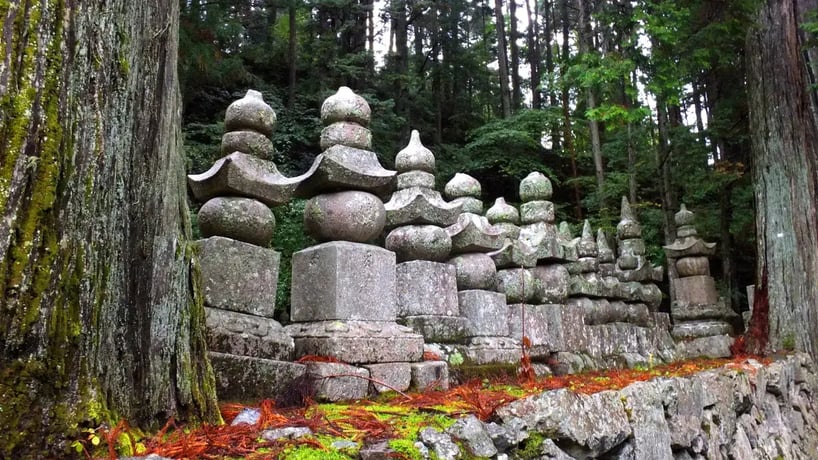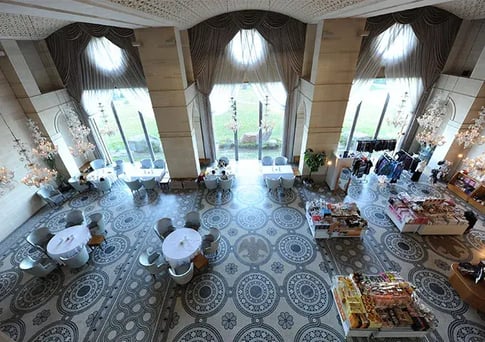🕓 2025/7/17
#ホテル

Table of Contents
About Wakayama Prefecture
Wakayama Prefecture is located in the southwestern part of Japan’s Kansai region and is a captivating destination where rich natural beauty and deep spiritual heritage coexist. Historically known as “Kii no Kuni” (Land of Kii), it is home to sacred sites such as the Kumano Sanzan and Mount Koya (Koyasan). The region preserves numerous cultural treasures, including the UNESCO World Heritage Site “Sacred Sites and Pilgrimage Routes in the Kii Mountain Range.” At places like Nachi Falls and the Kumano Kodo pilgrimage trails, visitors can witness the grandeur of nature while retracing the footsteps of ancient pilgrims.
In terms of tourism, Wakayama offers a variety of unique attractions: the stunning beaches and hot springs of Shirahama, the whaling culture of Taiji, and the fresh seafood of coastal towns like Kada and Kushimoto. Mount Koya, in particular, continues to draw pilgrims and visitors from around the world as the spiritual heart of Shingon Buddhism, with a history spanning over 1,200 years.
For those planning a visit to this remarkable region, we present three carefully selected luxury accommodations that promise a truly special stay in Wakayama.
Wakayama’s Top Three Ryokan
1. “Hotel Kawakyu” — A Seaside Palace Reigning over Shirahama
■ The Allure of Hotel Kawakyu
Rising like a foreign castle on a scenic cape in Nanki‑Shirahama, Hotel Kawakyu overwhelms visitors with its majestic presence, whisking them away from the everyday and into “Shirahama’s finest resort, where lavish beauty abounds.”
1. A Fusion of Architecture and Art: A Museum You Can Stay In

Evoking a European chateau, the hotel’s grand architectural style makes it one of a kind. So many artworks adorn the interiors that the property is often called “a museum you can sleep in.” Notable features include a tearoom designed by artist Yūgen Kawasaki, while the building itself brims with elements of high artistic value.
An on‑site Kawakyu Museum stages exhibitions—such as the conceptual show “Presence of Others”—so that a stay here becomes an immersive cultural experience. This meticulous blend of art and architecture offers not mere opulence but a carefully curated space that resonates with guests seeking intellectual stimulation and profound emotion.
2. Ultimate Luxury: All‑Suite Accommodations

Every room at Hotel Kawakyu is a suite. Choices range from Presidential Spa Suites, Maisonette Jacuzzi Suites, and Club‑Stage rooms with Imperial Lounge access to Modern Japanese Suites, Pet‑Friendly Maisonette Suites, Tower Suites, Kawakyu Suites, Royal Suites, Family Suites, and Southern Suites—a lineup that meets virtually any travel need.
All rooms feature ocean views, providing unparalleled openness and freedom.
3. The Legendary “King’s Buffet”

The hotel’s signature King’s Buffet, served at dinner and breakfast, unites selected premium ingredients from Hokkaido and local Kishu. Described as a “grand, delicate, and beautiful banquet,” the live‑kitchen presentation ignites all five senses in a spectacular culinary show.
Seasonal themes—such as “Spring 2025”—ensure that each visit brings new gourmet encounters. More than a meal, this buffet is the highlight of your stay: an entertainment experience whose richness and quality fully justify the “kingly” name.
4. Healing Time at the Royal Spa

The Royal Spa is the hotel’s pride and joy, comprising two zones: “Onsen Salon ROYAL SPA” on the second floor and “Onsen Salon Royal Spa Yūkyū no Mori” on the first. While detailed menus are limited, guests can be sure of indulging in the renowned Shirahama Onsen—one of Japan’s three oldest hot springs—within an elegant, hotel‑exclusive setting.
5. 特別な体験を彩る限定サービス

Hotel Kawakyu enhances each visit with unique offerings:
-
Premium Pair Lodging Vouchers
-
Special plans for ANA Premium Members and Super Flyers Club
-
Hands‑on workshops using Nanko‑ume, the finest Wakayama plum, to craft original plum wine or juice
-
Tastings of rare Champagne, such as new releases from Piper‑Heidsieck
These personalized touches enrich every stay with added luxury.
■ Access to Hotel Kawakyu

- Official Website: https://www.hotel-kawakyu.jp/
- Access: Complimentary shuttle bus between JR Shirahama Station and Hotel Kawakyu
- Address: 3745 Shirahama‑chō, Nishimuro‑gun, Wakayama 649‑2211, Japan
- Google Maps:https://maps.app.goo.gl/76hjTKWZspK5PLUh8
2. Koyasan Bekkaku Honzan Souji‑in
 出典:總持院荘 公式HP
出典:總持院荘 公式HP
■ The Allure of Souji‑in
On sacred Mount Koya—a UNESCO World Heritage Site—Souji‑in, a Bekkaku Honzan (special‑status head temple), sits quietly beside the Grand Head Temple Kongobu‑ji and directly faces the esplanade of Danjo Garan. Though steeped in prestige, the temple welcomes pilgrims and travelers alike as a shukubō (temple lodging).
1. A Millennium of Heritage: The Living Breath of a Holy Site

Founded between 1145 and 1151 during the Heian period by the monk Gyōe Sōjibō, Souji‑in has long been revered. Over the centuries it forged deep ties with notable feudal families such as the Hosokawa, Sagara, and Date clans, and people from across Japan still visit to honor their ancestors.
Within the grounds lives an ancient wisteria—said to be a thousand years old—christened “Tōryū‑no‑Fuji” (“Ascending Dragon Wisteria”) by Prince Komatsu Akihito of Ninnaji. Souji‑in’s special status and centuries‑old legacy create an atmosphere of authenticity that adds profound depth to any stay.
2. Shojin Cuisine that Delights All Five Senses

Meals at a temple lodging usually mean shōjin ryōri (Buddhist vegetarian fare), but Souji‑in elevates the genre. Using plentiful seasonal vegetables and umami‑rich broth, each dish is both visually striking and deeply flavorful.
Diners often remark that the experience rivals Kyoto kaiseki, and the temple’s house‑made sesame tofu, available to take home, is especially popular. By pursuing culinary joy within strict monastic guidelines, Souji‑in overturns the conventional image of temple fare and offers new value that captivates gourmets.
3. Diverse Gardens that Deepen the Silence

Several meticulously tended gardens calm the hearts of visitors. A vast main garden borrows the backdrop of Prince Kakuhō’s mausoleum, while four others—a pond garden, moss garden, rock garden, and additional landscape—reveal different moods through the seasons.
Whether strolling the paths or sitting quietly on a wooden veranda, guests find deep serenity and time for reflection. Some rooms overlook the gardens directly, fostering a sense of oneness with nature.
4. Harmony of Ancient Rituals and Modern Comfort

Guests may join the early‑morning service (otsutome), listening to sutra chanting and a Dharma talk in a solemn atmosphere that cleanses the spirit. Sutra copying (shakyō) and even Buddhist wedding ceremonies are also offered.
Yet the guest rooms are surprisingly comfortable: spotless spaces feature air‑conditioning, television, and free Wi‑Fi; many have private washbasins and toilets. The large communal bath provides amenities from the French brand Ella Baché, reflecting attention to detail.
■ Access to Souji‑in

- Official Website: https://www.asukasou.com/
- How to Reach: From Gokurakubashi Station, transfer to the Koyasan Cable Car and ride up to Koyasan Station.
- Address: 143 Koyasan, Koya‑chō, Ito‑gun, Wakayama 648‑0211, Japan
- Google Maps : https://maps.app.goo.gl/3MrqX15ox6rKjN2D8
3. Blanchette Nanki‑Shirahama
■ The Allure of Blanchette Nanki‑Shirahama
Breathing new life into the Nanki‑Shirahama area, Blanchette Nanki‑Shirahama is a resort hotel that prioritizes privacy: every accommodation is a stand‑alone villa.
1. Villas with Private Spas: Shirahama Onsen All to Yourself

Seventy‑one white‑tiled villas with distinctive triangular roofs are arrayed across the grounds. Each villa features an open‑air terrace and a private spa, allowing guests to enjoy Shirahama Onsen—one of Japan’s three oldest hot springs with a history spanning over 1,400 years—whenever they like, 24 hours a day, without worrying about onlookers. The combination of complete privacy and hot‑spring luxury embodies the “premium relaxation” today’s travelers seek, making the property especially popular with couples and families.
2. A Five‑Sense “Live Dining” Experience

The restaurant adopts a Live Dining style, where chefs cook right before your eyes. The sound of sizzling steak, enticing aromas, and vibrant plating turn each meal into entertainment that stimulates all five senses. At dinner, roughly 40 types of drinks—including local sake—are available in an all‑you‑can‑drink format. This open kitchen underscores the hotel’s confidence in its ingredients and its commitment to connecting with guests through food.
3. The “Uoberge” Philosophy: Maximizing Local Bounty
.webp?width=511&height=319&name=img02%20(1).webp)
The core concept, “Uoberge” (a play on auberge and uo—fish), reflects a deep devotion to local ingredients, especially fresh seafood. Seasonal catches unique to Shirahama—such as sea bream, tuna, cutlassfish, Hiōgi clams, and scorpionfish—are joined by rare Kumano beef and organic vegetables from contracted farms. French techniques form the base, enhanced with Japanese and Italian elements, to draw out each ingredient’s true flavor.
4. The Joy of Discovery: A Small‑Plates Feast

Although meals often follow a buffet format, many dishes are served in small portions, letting guests sample a wide variety and create their own bespoke course. The mysteriously named Plan “The Secret,” whose contents remain undisclosed until just before service, is especially popular.
5. Refined Design and Relaxing Spaces
.webp?width=495&height=243&name=main%20(1).webp)
Rows of white, triangle‑roofed villas create a scene that is both pristine and resort‑like—picture‑perfect from any angle and worthy of a photo. Beyond aesthetics, the layout emphasizes privacy, and the unhurried atmosphere guarantees true relaxation.
■ Access to Blanchette Nanki‑Shirahama

- Official Website: https://blanchette-ns.com/
- Access: Approximately 5 minutes by car from JR Shirahama Station
- Address: 2498‑46 Katata, Shirahama‑chō, Nishimuro‑gun, Wakayama 649‑2201, Japan
- Google Maps : https://maps.app.goo.gl/nresYfQCStDbGdBw8


